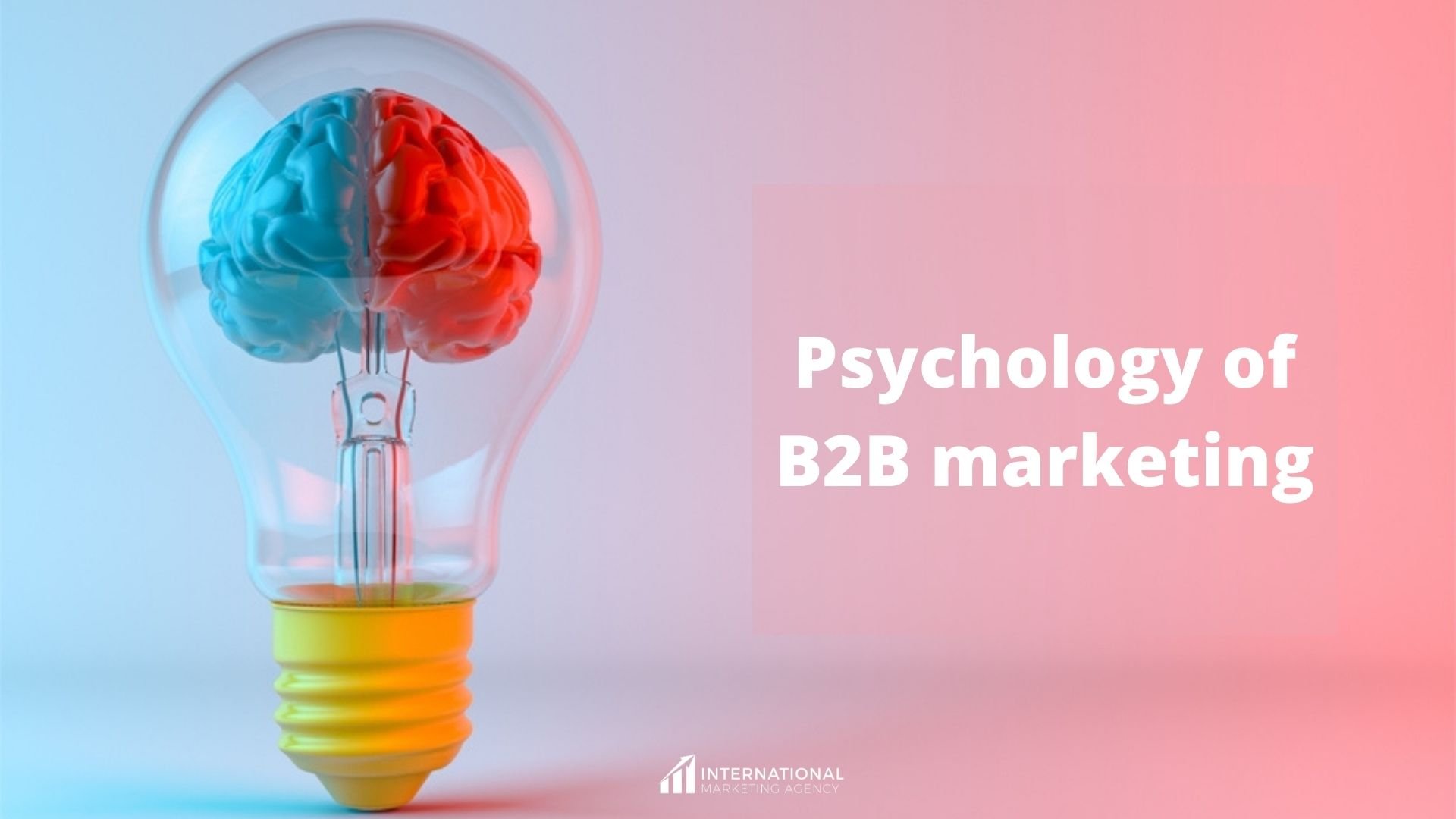Psychology of B2B marketing

Before everything else you have to understand that B2B customers are also human, deeply rational ordered, and professional beings. Understanding how customers buy, what they buy, when and why, is the Holy Grail of all marketers. You can give them more of what they want and are looking for, so much more efficiently, when you know how their minds work. So let’s dive deeper into the brain of the B2B customers. Here is what drives them through the decision-making process:
1. Reciprocity
You have to give in order to get back. If someone does something for you, you feel the need to do something back for them. That is reciprocity.
The leading word here is value. In order to receive something back, you need to offer something valuable. For example, by providing valuable content to people in return you receive contact details, a share on Twitter, or a sale.
As the sales cycle tends to be longer due to the high value of a B2B purchase, reciprocity is especially important. Therefore, building relationships by providing value is crucial for moving customers down the funnel and keeping leads alive.
2. Authority
Demonstrating authority and thought leadership is a real advantage in B2B marketing. B2B customers seek expertise and education, so positioning yourself as a credible, seasoned veteran in your field is a highly influential trust builder.
One of the best ways to demonstrate authority is through the content. Create blog posts, videos, whitepapers, other types of content and give authority sources to establish credibility. But nowadays webinars are the most popular way to get to your B2B audience and communicate with them. They want to listen to webinars so they can educate themself and read and hear experiences from experts.
If you want your audience to believe you, you have to give them the reasons.
3. Social proof
Even Though the B2B customers buy for their business they still rely on recommendations from people they know. In the era of the internet when we are bombarded with choices, people look for social proof when making buying decisions. This is why having a social media content creation that your social media followers will share is so important.
Showing off some positive feedback from your customers in the form of testimonials, case studies, reviews or social shares can leverage the influence of social proof. It’s a fact that we tend to trust things that are widely adopted and trusted by others. One company has shared an interesting story in which they say that when they told a potential customer that their competitor is using their product they instantly bought it too, so it’s a good tactic to use.
Another thing that you have to have in mind is that your visitor or lead isn’t always the decision-maker. They often have to remarket your product or service to their superior to persuade them of the value of your product or service so providing social proof will serve you as a persuasion tool to acquire the buy-in from the real decision-maker.
4. Colors
It’s really important to use the right colors based on the emotions you want to evoke. Here is what message different colors send, we have listed a few below:
- Red– gives a sense of importance, lighter shades emphasize youthfulness while darker shades emphasize power and durability, great for sales
- Yellow– gives energetic vibes, lighter shades are often associated with happiness while darker shades give a sense of antiquity, yellow grabs attention
- Blue– represents trust, gives a feeling of safety and security, the calming effects make blue a friendly and inviting color, mostly used by banks
- Orange– adds excitement and plays on impulse, it’s playful, commands attention, ideal for CTA buttons
- Green– represents nature and organic quality, gives a feeling of stability, provides a positive message, and is good for relaxing customers
5. Limited choice
Have you ever been in a situation where there are simply so many options on offer that you find it impossible to choose? That is called ‘analysis paralysis’ and you are not alone.
A study by Stanford University proved that more choice makes consumers less likely to buy. People like special offers. They are more likely to buy them if there are a limited number available, or a limited time in which to purchase them.
People want to make a trusted, tried, and tested choice quickly, and keeping your offerings as simple as possible helps them achieve this goal.
6. Loss aversion
According to a study by Nobel prize winner Daniel Kahneman, people are more concerned with preventing a loss than gaining something new. The research uncovered that the pain of loss is almost twice as much as potent as any reward from again.
If you want to use this principle in your marketing materials, think about how you can pitch what people would lose by not buying your product or service and highlight those key points.
7. Pricing
If you are thinking that low prices will bring you more customers you are wrong. Low prices can create a sense of distrust and cautiousness in them regarding the authenticity of your services/products. B2B buyers have a usual trait of risk-aversion.
Even though the price matters to them, the value plays a crucial role. Their focus is more on how your services or solutions are helping them meet their goals.
So, instead of waging a price war with your competitors, focus on building a pricing strategy based on the value your company provides. If what you offer satisfies their needs and goals, they rarely care about how much they have to spend.


